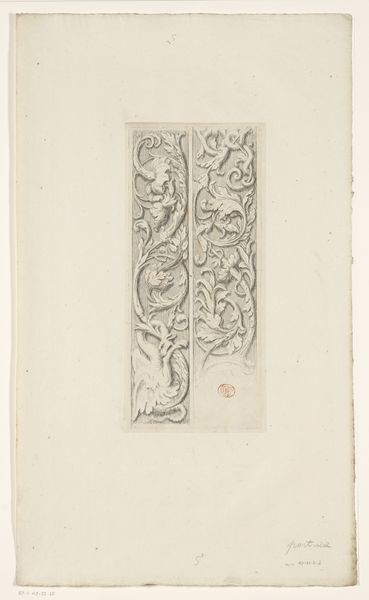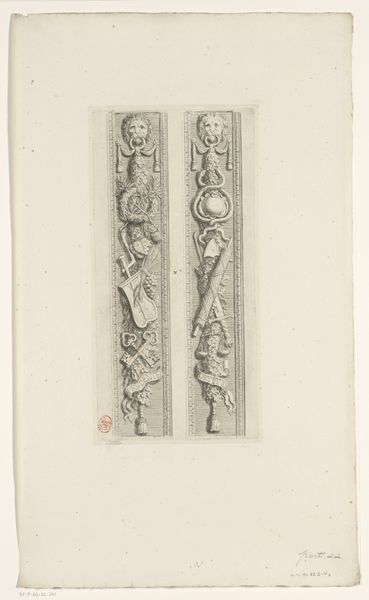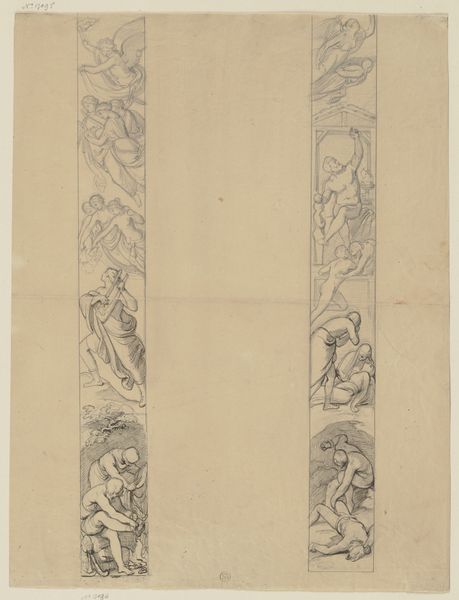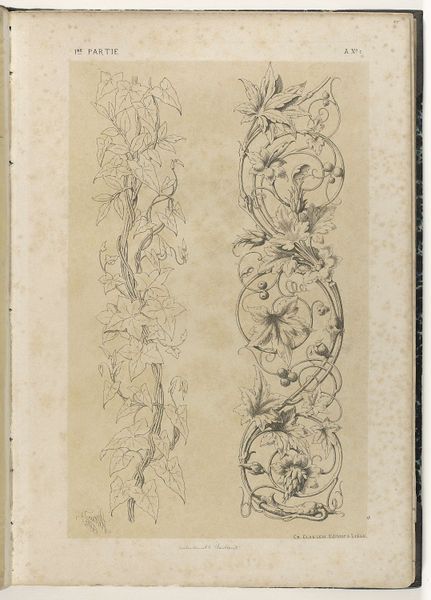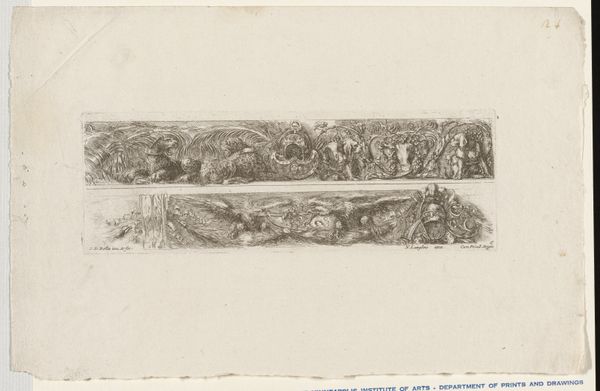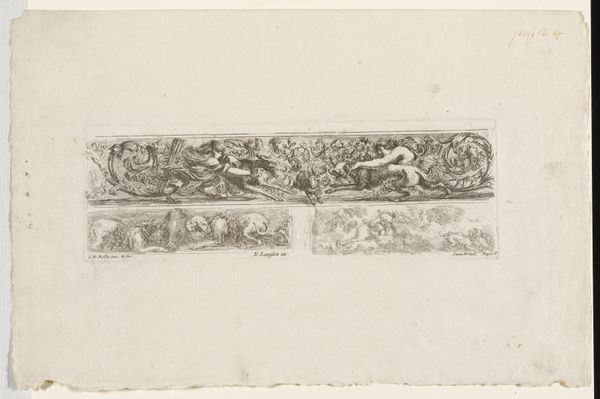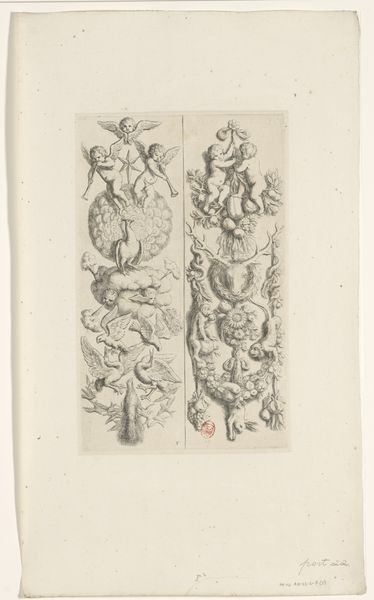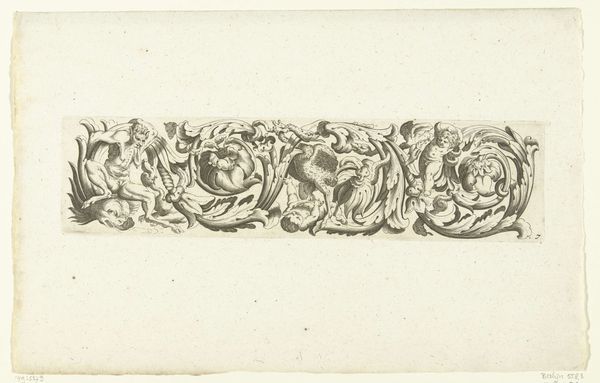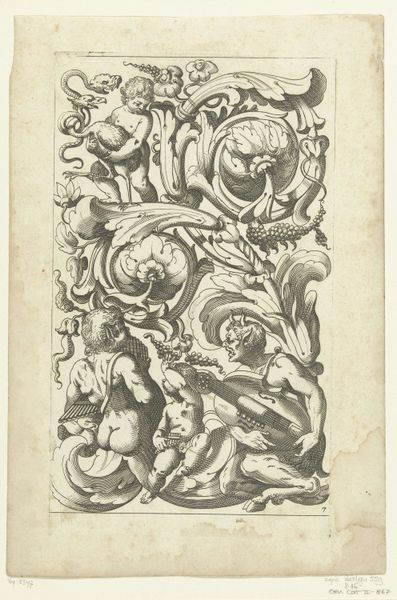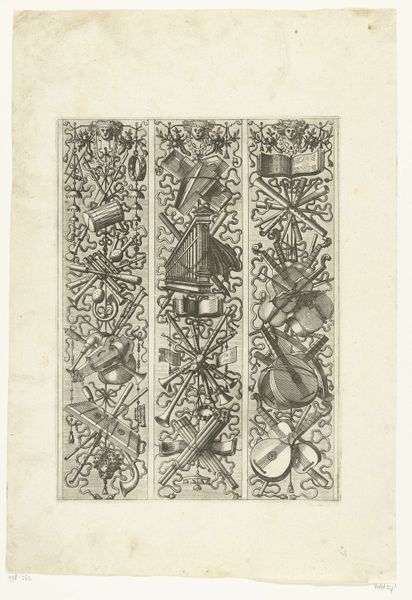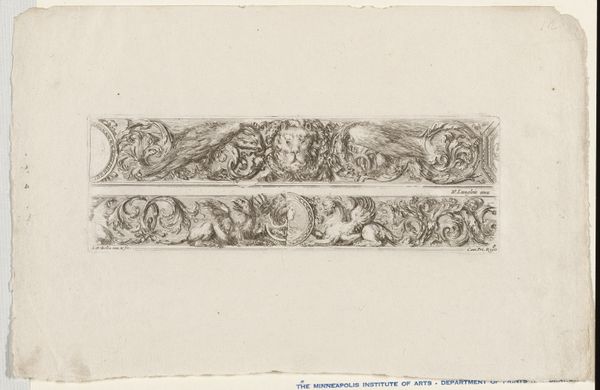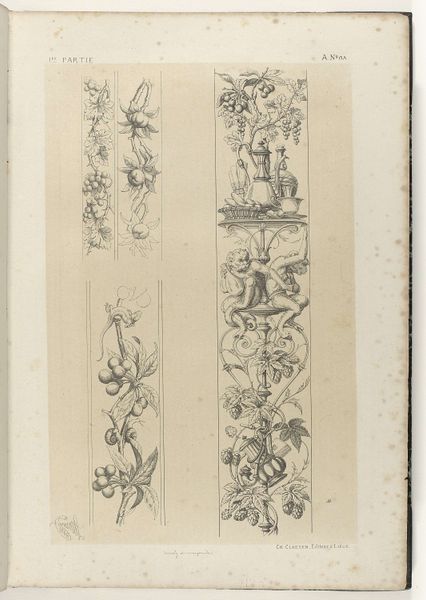
Fries boven boog naar trappen aan oostzijde van Burgerzaal in het Stadhuis op de Dam 1663
0:00
0:00
drawing, paper, ink
#
drawing
#
baroque
#
paper
#
ink
#
genre-painting
Dimensions: height 132 mm, width 364 mm
Copyright: Rijks Museum: Open Domain
Curator: Look at the elegance captured in this 1663 drawing by Hubert Quellinus, titled "Fries above arch to stairs on the east side of the Burgerzaal in the Town Hall on the Dam," rendered meticulously in ink on paper. It's held at the Rijksmuseum. Editor: It has a delicate grace to it, but something about the composition feels static, almost like it is longing for the context of a more expansive design. Curator: These kinds of drawings showcase not only Baroque style with its intricate detailing but are documents of a fascinating intersection between civic power and artistic expression. They also show some traces of genre painting within the detail. What do you see here? Editor: Yes, looking closer, there are familiar symbols here, even separate from its original context: the horns of plenty brimming with bounty and then an image of what appear to be books and a pair of glasses - knowledge that supports societal success. I imagine at that time, seeing such iconography on civil buildings reinforced ideas about the state as benevolent, plentiful, and knowledgeable. The inclusion of elements of classic knowledge reminds us that governments often like to frame themselves within longer narratives of power, achievement, and morality. It gives an impression of order imposed upon natural chaotic creativity! Curator: That’s an interesting tension to consider! Quellinus seems to consciously employ certain forms in very deliberate and thoughtful ways to subtly, almost subconsciously, reinforce a social order and a general worldview. Editor: This piece provides a glimpse into that worldview, showing how art and civic design coalesced to subtly convey ideologies about Dutch society in the 17th century. But there’s a kind of hollowness, too. Its delicacy renders it nearly invisible to most, so what's the use? Is the messaging here subtle or simply weak? Curator: The messaging works at multiple levels, almost as a spell—working invisibly, as you suggest, in order to work effectively. The use and depiction of fertility and intellect are a way to imbue the physical site of governance with symbolic force and to link a worldly location with divine favour. This intertwining suggests cultural continuity. Editor: It truly does. I can better appreciate this artwork and how its context can shift how we think about how cities display their ethics!
Comments
No comments
Be the first to comment and join the conversation on the ultimate creative platform.
